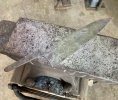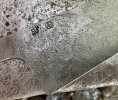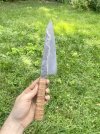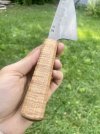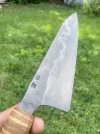- Joined
- Jul 8, 2021
- Messages
- 225
Gotcha. The reason I ask is that people who make sword blades often need to use a forge, because getting a furnace long enough can be expensive and difficult. I also find that heat treating a sword-sized blade in a forge is a lot easier than a knife, because the much greater thermal mass drastically helps stabilize temperature fluctuations in the billet, helping to avoid overheating.
Sword blade makers also more often need to forge the billet itself, just to form the curves and dimensions needed. I suspect people will be making sword blades out of this new steel.
Honestly from a customers standpoint; I'd rather see them sub contract the heat treat to a service provider with consistent, controllable equipment, even if that means reasonable increased cost and wait time. Downside is increased cost and time, the upside is accuracy, consistency and the sub contracter will be liable (to the maker) for mistakes and losses in time, materials, labor etc. if they wreck a piece/batch etc.
Last edited:

